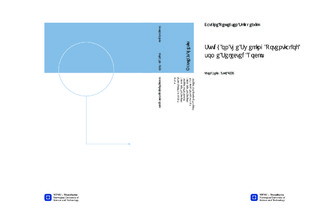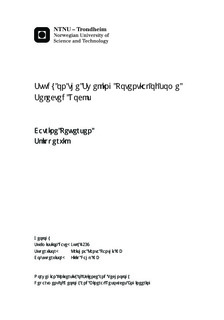| dc.contributor.advisor | Panthi, Krishna Kanta | nb_NO |
| dc.contributor.advisor | Dahl, Filip | nb_NO |
| dc.contributor.author | Pettersen Skippervik, Catrine | nb_NO |
| dc.date.accessioned | 2014-12-19T11:56:55Z | |
| dc.date.available | 2014-12-19T11:56:55Z | |
| dc.date.created | 2014-08-23 | nb_NO |
| dc.date.issued | 2014 | nb_NO |
| dc.identifier | 740262 | nb_NO |
| dc.identifier | ntnudaim:10256 | nb_NO |
| dc.identifier.uri | http://hdl.handle.net/11250/236308 | |
| dc.description.abstract | Weaknesses zones consisting of sheared and fractured rock mass have a swelling potential in the presence of clays rich in montmorillonite. When it comes to intact rocks there are questions regarding both the swelling potential and the main reasons for swelling in the different rock types. This is experienced in several projects, where swelling of intact rock has been different than what was expected. To better understand what is causing the behaviour of intact rock when exposed to water a comprehension on the water impact on the swelling potential is required. For clay minerals the swelling mechanisms and factors influencing on the swelling potential is explained and confirmed by comprehensive research. Four types of clay minerals are discussed to describe the swelling potential of these minerals in contact with water. The extensive laboratory work performed for this thesis addresses a study on the expansive character of intact rock. Three different rock types are tested; alum shale, greenschist and tuff and the rocks vary in both structure and mineral composition. The rocks were selected in dialog with the supervisors at SINTEF and NTNU. Three traditional test methods, swelling pressure determination performed on dust powder and rock cylinders and free swelling, have been used in the previous testing on both gouge material and intact rocks. The measured values for swelling pressure have been low even though observations would indicate otherwise. For this reason a new approach has been made and a new test apparatus is developed by SINTEF/NTNU. This method for determination on the swelling strain of rocks cubes when submerged in water gives measurements in three directions. When exposed to water the displacement in all three directions is recorded over time. The mentioned swelling test methods are combined with mineralogical analysis and rock mechanical tests to determine the swelling potential of intact rock and to find correlations that might explain the mechanisms of swelling in a larger scale. The applicability of this new method and comparisons to the other test methods is discussed. Following conclusions on the basis of the test results are drawn: All three rocks show swelling potential of varying degree and some correlations between swelling potential and rock mechanical properties are found. The testing method for rock cube is by far the best in terms of execution and presentation of the results. This method is the most tangible regarding criterias and behaviour of expansive rocks as it results in values for actual displacement of the rock mass which may relate to the in situ conditions. | nb_NO |
| dc.language | eng | nb_NO |
| dc.publisher | Institutt for geologi og bergteknikk | nb_NO |
| dc.title | Study on the Swelling Potential of some Selected Rocks | nb_NO |
| dc.type | Master thesis | nb_NO |
| dc.source.pagenumber | 135 | nb_NO |
| dc.contributor.department | Norges teknisk-naturvitenskapelige universitet, Fakultet for ingeniørvitenskap og teknologi, Institutt for geologi og bergteknikk | nb_NO |

